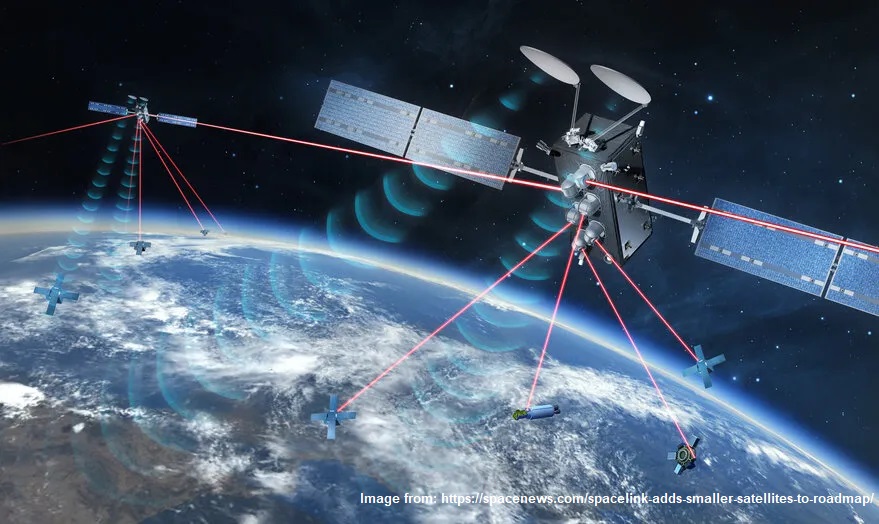Abstract: Seamless transitioning between terrestrial networks, such as 6G, and satellite networks for satellite roaming is an emerging concept that promises uninterrupted connectivity and enhanced user experience. This article explores the significance of seamless transitioning and the crucial role played by advanced protocols in enabling this capability. By seamlessly handing over ongoing communication sessions, authentication and authorization, network discovery and selection, signal control and adaptation, quality of service (QoS) management, and standard network protocols, these protocols ensure a smooth transition between networks. The seamless transitioning paradigm opens up new possibilities for global coverage, improved data transmission, and optimized resource allocation. Through a comprehensive understanding of the protocols involved, stakeholders can work towards harnessing the potential of seamless transitioning to realize the vision of enhanced terrestrial-satellite roaming.
Introduction: In our increasingly connected world, seamless connectivity is a fundamental requirement for users across the globe. As wireless technologies continue to advance, the ability to transition seamlessly between different networks becomes essential. One area that holds tremendous potential is the seamless transitioning between terrestrial networks, like 6G, and satellite networks for satellite roaming. This capability, made possible through the implementation of advanced protocols, opens up a world of possibilities for uninterrupted connectivity regardless of location. In this article, we explore the concept of seamless transitioning, its significance in achieving terrestrial-satellite roaming, and the role of advanced protocols in enabling this seamless experience. We will delve into the various protocols involved and how they work together to ensure uninterrupted connectivity and enhance the overall user experience. Join us as we explore the fascinating world of seamless transitioning and its transformative impact on terrestrial-satellite roaming.
Protocols are the foundation of modern communication systems, ensuring smooth and uninterrupted connectivity between different networks. When it comes to seamless transitioning between terrestrial networks, such as 6G, and satellite networks for satellite roaming, protocols play a crucial role in facilitating a seamless handover of connections. Let’s delve deeper into the various protocols and their specific roles in achieving this objective.
- Handover/Handoff Protocols: Handover protocols are essential for managing the transfer of an ongoing communication session from one network (terrestrial) to another (satellite) without any interruption. These protocols ensure that the connection is seamlessly handed over to the satellite network while maintaining the continuity of the session. Handover protocols handle tasks such as signaling, authentication, and negotiation between the networks involved. They facilitate a smooth transition, allowing the user to seamlessly switch between networks without experiencing any disruption in the service.
- Authentication and Authorization Protocols: During the handover process, authentication and authorization protocols play a critical role in verifying the identity of the user or device. These protocols ensure that the user or device is authorized to connect to the satellite network and access its services. By establishing secure communication channels and validating credentials, authentication and authorization protocols maintain the integrity and security of the roaming connection. They protect against unauthorized access and ensure that only legitimate users can seamlessly transition between networks.
- Network Discovery and Selection Protocols: To achieve seamless transitioning, it is crucial to identify and select the most suitable network, whether terrestrial or satellite, based on factors such as signal strength, quality, coverage, and user preferences. Network discovery and selection protocols assist in this process by scanning the available networks in the vicinity and autonomously determining the best network to connect to. These protocols enable devices to make informed decisions and select the appropriate network for a seamless transition. By considering various network parameters, they optimize the handover process and enhance the overall user experience.
- Signal Control and Adaptation Protocols: Seamless connectivity during satellite roaming requires efficient signal control and adaptation to account for the differences between terrestrial and satellite networks. Signal control and adaptation protocols manage the various aspects of signal characteristics, including modulation schemes, coding techniques, frequency bands, and signal strength. These protocols ensure that the communication parameters are adapted and optimized during the handover process to maintain data transmission continuity and maximize performance. By dynamically adjusting the signal parameters, they enable a seamless transition and ensure uninterrupted connectivity for users.
- Quality of Service (QoS) Protocols: Maintaining a consistent level of service is crucial during satellite roaming. QoS protocols prioritize and manage data traffic to ensure a satisfactory user experience. These protocols allocate network resources based on the prioritization of critical data streams. By optimizing bandwidth utilization, reducing latency, and managing network congestion, QoS protocols enhance the quality and reliability of the communication during the handover process. They ensure that the user’s service requirements are met, regardless of whether they are connected to a terrestrial or satellite network.
- Network Protocols: Standard network protocols, such as Internet Protocol (IP), Transmission Control Protocol (TCP), and User Datagram Protocol (UDP), are vital for carrying data packets over both terrestrial and satellite networks. These protocols facilitate end-to-end communication, routing, error detection, and data integrity across the interconnected networks. By adhering to standardized protocols, devices can seamlessly exchange data packets between different networks, ensuring consistent connectivity and reliable communication during the handover process.
By working collectively, these protocols enable seamless transitioning between terrestrial networks (like 6G) and satellite networks for satellite roaming (7G). They ensure uninterrupted connectivity, secure authentication, optimal signal control, efficient resource allocation, and a consistent quality of service during the handover process. Through the implementation of these protocols, users can enjoy continuous connectivity and access to services across different network environments, enhancing their overall communication experience and unlocking the full potential of advanced wireless technologies.




